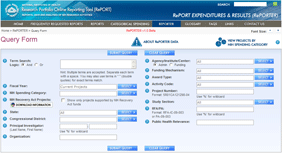Following on from my earlier post, Progress Reports and the Public Access Policy, I’d like to share answers to a few of the questions program directors/principal investigators (PDs/PIs) have asked about compliance procedures.
I didn’t submit my paper to PubMed Central until recently and my progress report is due. They tell me it may take 6 weeks to complete the process. What should I do?
Respond promptly when the NIH Manuscript Submission System (NIHMS) requests that you approve the version to be posted so your PMCID can be issued as quickly as possible. Also, check with your sponsored projects or research administration office about procedures during a possible gap in funding.
The public access policy requires papers to be submitted to the NIHMS upon acceptance for publication. Because so many PDs/PIs are still catching up on submitting their publications, PubMed Central processing times are much longer than the usual 2 weeks. As NIH announced in February, noncompeting continuation awards will not be made until publications arising from that grant are in compliance with the NIH Public Access Policy.
The law mandating the Public Access compliance requirement is based on the use of grant funds for published research. When in doubt about publication-grant associations, contact your NIH program official (PO).
Should I report ALL my grant’s publications in my annual progress report?
No. Just report the publications arising from this grant’s funding during the single grant year you’re reporting.
Even if they have only recently been added to your NCBI My Bibliography, don’t include publications from previous grant years. You should still make sure the earlier publications have PMCIDs, because it’s the law and a legal term and condition of your NIH award. In addition, you’ll need PMCIDs for competing renewal applications and NIH biosketches.
I inadvertently assigned a publication to my RPPR that describes work not funded by the grant being reported. What can I do?
If you realize this BEFORE the RPPR (or PHS 2590) is submitted to NIH by your sponsored projects or research administration office, you can remove the link in the My Bibliography Award View display by unchecking the box. (Yet another reason to run the Public Access Compliance report early: Making corrections is easy!)
A lock icon  indicates that a publication-grant connection has already been recorded. A yellow lock means the paper was linked to the award in the NIHMS. To undo this association, you’ll need to contact the NIHMS Help Desk. A gray lock means the paper has already been officially reported to NIH as arising from the award. To undo that association, you’ll have to officially amend the report that triggered the lock. Please contact the NIH PO for the grant. If your PO approves the correction, ask him or her to e-mail PublicAccess@mail.nih.gov to execute the change.
indicates that a publication-grant connection has already been recorded. A yellow lock means the paper was linked to the award in the NIHMS. To undo this association, you’ll need to contact the NIHMS Help Desk. A gray lock means the paper has already been officially reported to NIH as arising from the award. To undo that association, you’ll have to officially amend the report that triggered the lock. Please contact the NIH PO for the grant. If your PO approves the correction, ask him or her to e-mail PublicAccess@mail.nih.gov to execute the change.
I thought the journal’s publisher would submit my paper for me. Why is the citation marked “noncompliant”?
The NIH Public Access Web site describes the four submission methods (A, B, C and D) and lists for each method what the publisher will do, what an author must do and what a designee can help with. Different publishers, and even different journals from the same publisher, follow different practices. The key is for you and any other authors to understand which method you and your publisher have agreed to. Perhaps the most common issues are:
- An author expects a Method B publisher to complete the entire compliance process without having made a specific arrangement with the publisher.
- An author (or designee) submits the final, peer-reviewed manuscript directly to the NIHMS (Method C) or a Method D publisher submits the manuscript, but one of the authors does not follow through to:
- Authorize the NIHMS to process the manuscript to PMC format (a quick return e-mail), and
- Approve the formatted version to be posted on PubMed Central.
All authors should agree on who will do the various steps. And it’s a good idea to have a back-up plan.
My paper was published as an open access article. Why do I need a PMCID?
Journals and publishers are free to change their access policies at any time or to remove papers that have been posted. NIH is required by law to assure that papers describing work funded by our grants are and remain available to the public through PubMed Central.
What if I have other questions?
Contact your PO, e-mail PublicAccess@mail.nih.gov and/or visit the NIH Public Access Policy Web site.



